LarisaBlinova/iStock/GettyImages
Shrimp is an excellent source of protein for your family, with a delicate flavor that even the pickiest eaters won't object to, especially when added to a favorite dish such as pasta or a stir fry. Cooking shrimp is lightning fast once they're thawed, but you don't have to thaw them in advance; just add a couple more minutes to the cooking time.
Purchasing Shrimp
If you haven't purchased your shrimp for your recipe yet, choose frozen shrimp rather than thawed. Unlike most seafood, you are better off purchasing frozen shrimp for best results. This is because fresh shrimp are very perishable. Unless you live in an area where you are able to get shrimp caught the same day, the quality of your shrimp might suffer from not being frozen. In addition, if you purchase thawed shrimp at the supermarket, you do not know how long they have been sitting out, which may put your family at risk for food-borne illness.
Deciphering the Recipe
Read the recipe. If the recipe calls for boiled shrimp or simmered shrimp and the water from the thawing shrimp won't affect the sauce, such as the case of a shrimp boil in which the cooking water is discarded, you can add the shrimp frozen. Add approximately two minutes to the overall cooking time to accommodate for the fact that the shrimp must thaw before they begin cooking. However, if the shrimp are baked, grilled, or cooked in a sauce that you will be serving alongside the meal, thaw them first or the water from the shrimp might thin the sauce.
When in Doubt
If you aren't sure whether the water given off by the thawing shrimp will affect the recipe, thaw them. You can thaw the shrimp by placing them on a plate and leaving them in the refrigerator overnight. If you don't have 24 hours, thaw the shrimp quickly by placing the shrimp in a colander and running cool water over them for four minutes or until they are no longer hard.
Cooking Tips
Whether you added the shrimp thawed or frozen, you will know they are done cooking when they turn bright pink. Do not cook the shrimp past this point or they will become very dense and rubbery, making them less palatable. Allow shell-on shrimp two minutes to cool before you serve them so your little ones don't burn their fingers trying to take the shells off.
Related Articles
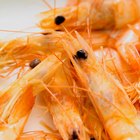
How to Prepare Live Shrimp

Do I Peel Shrimp Before They Are Boiled?

How to Thaw Frozen Cooked Shrimp Quickly
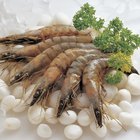
How to Cook Shrimp in the Crock-Pot
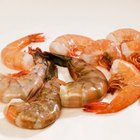
How to Cook Frozen Shrimps That Still ...
Do I Steam or Boil Shrimp?

Jumbo Shrimp Nutritional Facts
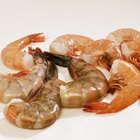
Can You Cook Shrimp Without Thawing ...
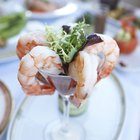
How Long Can Shrimp Be Refrigerated?
How to Cook Frozen Shrimp
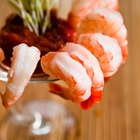
How to Cook Shrimp to Serve Chilled

How to Cook Benihana Shrimp
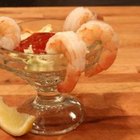
How to Make Shrimp Cocktail

How to Make Fresh Clam Sauce

How to Steam Lobster & Shrimp

How to Cook Shrimp With Butter
How to Cook Shrimp Shish Kebabs in the ...

How to Blanch Frozen Shrimp

How to Absorb the Fishy Smell When ...

How to Blanch Sausage
References
- "How to Cook Everything"; Mark Bittman, et al.; 2008
- "The New Woman's Day Cookbook"; Elizabeth Alston, et al.; 2007
- "Joy of Cooking"; Irma von Starkloff Rombauer et al; 1997
Writer Bio
Natalie Smith is a technical writing professor specializing in medical writing localization and food writing. Her work has been published in technical journals, on several prominent cooking and nutrition websites, as well as books and conference proceedings. Smith has won two international research awards for her scholarship in intercultural medical writing, and holds a PhD in technical communication and rhetoric.